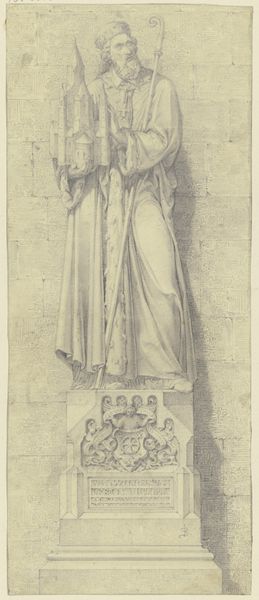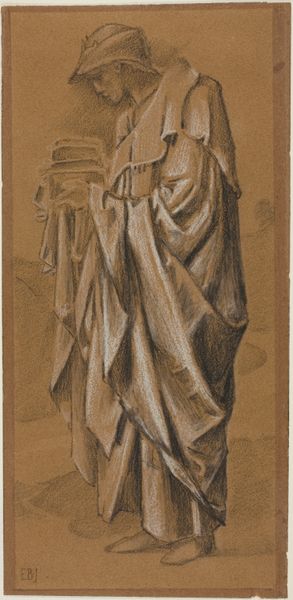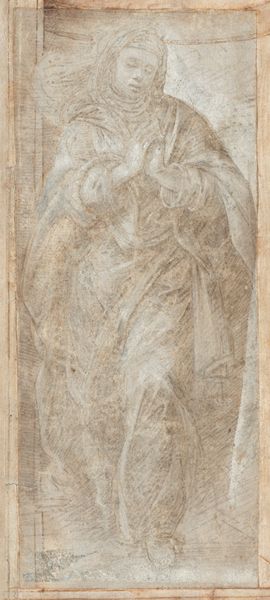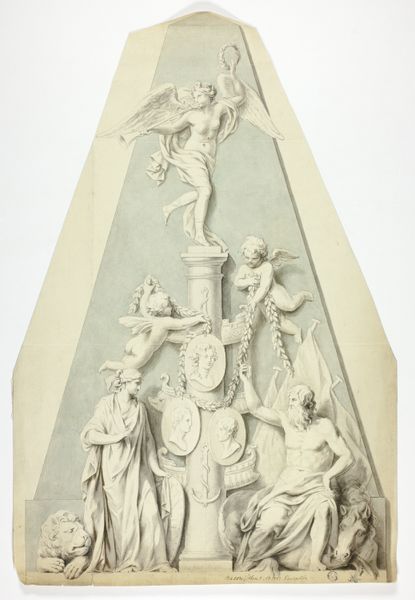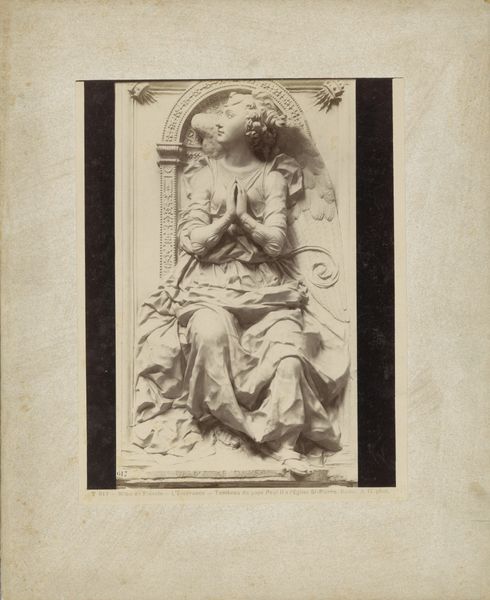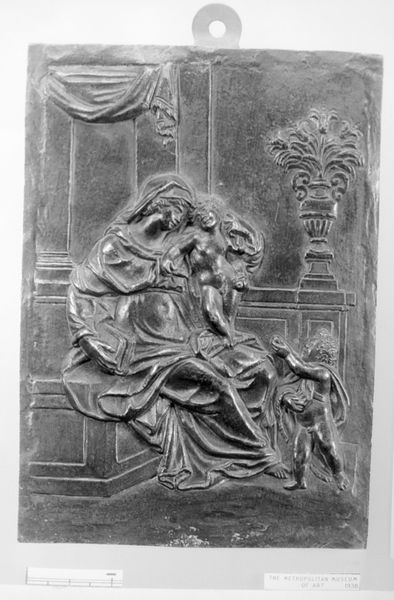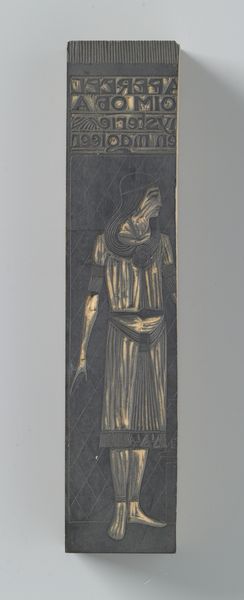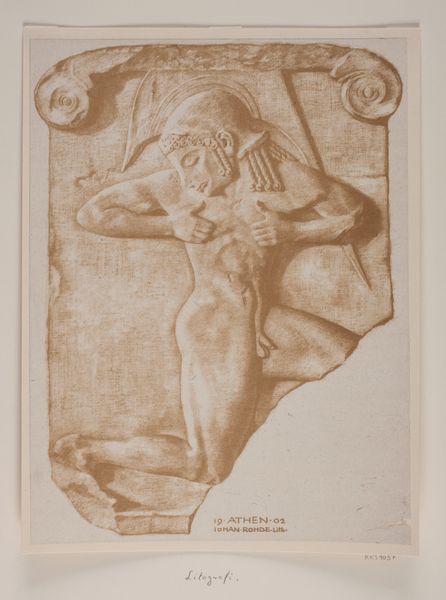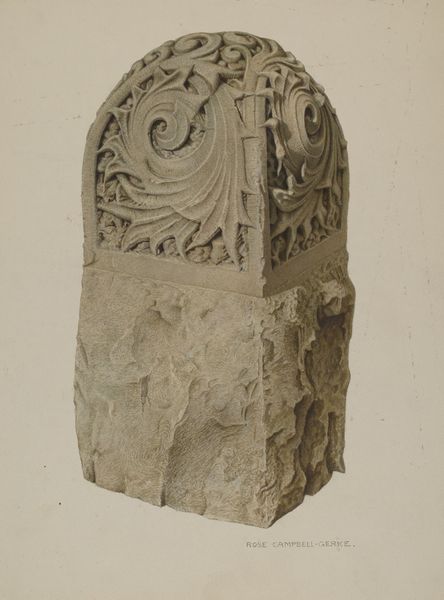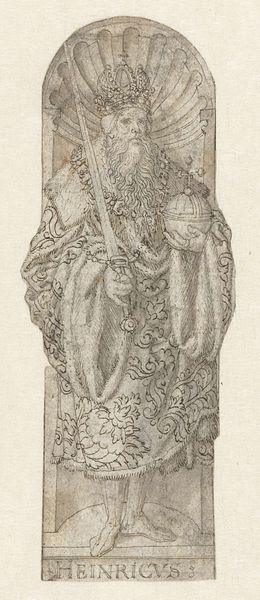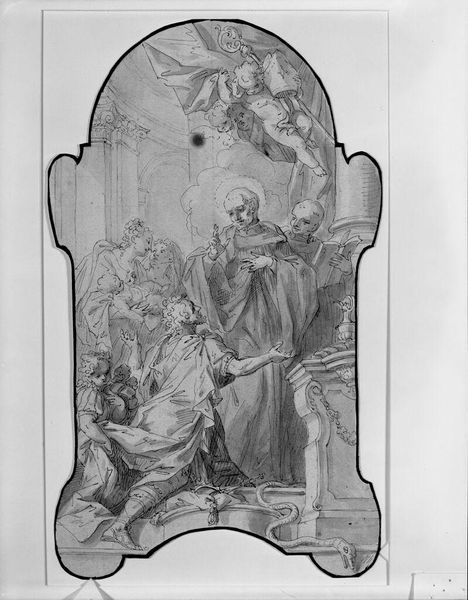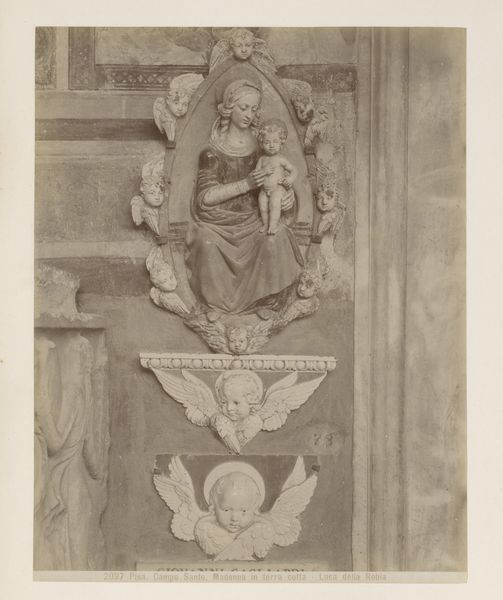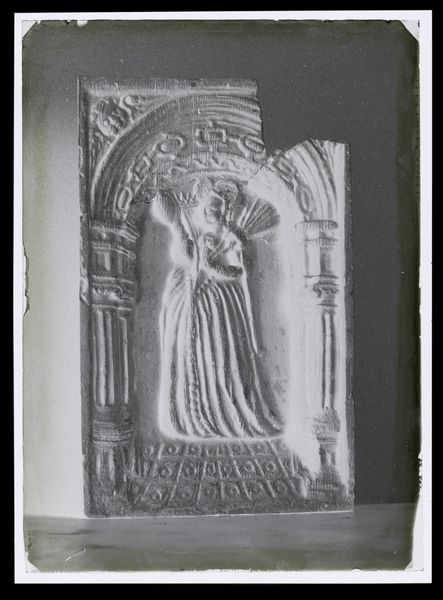
carving, sculpture
#
portrait
#
medieval
#
carving
#
stone
#
sculpture
#
figuration
#
sculpture
#
carved
Dimensions: height 239 mm, width 90 mm
Copyright: Rijks Museum: Open Domain
Curator: The carving presents Albrecht von Wertheim as depicted within the Bamberg Cathedral. It is believed to have been crafted sometime between 1900 and 1920, channeling medieval themes into the early twentieth century. Editor: My initial impression is dominated by the cascading drapery; it’s so heavily stylized. Notice how the vertical lines are offset by these repeated curves, creating both dynamism and an interesting textural complexity within the stone itself. Curator: Absolutely, and I think this formal emphasis serves to underscore the renewed interest in medieval aesthetics during the late 19th and early 20th centuries. The figure is carefully posed, presenting Albrecht not just as an individual, but as an exemplar of religious and political authority, aligning the church with regional powers. Editor: I’m also intrigued by the way the figure seems almost detached from its architectural niche, creating this interplay of foreground and background. It’s as though the artist sought to flatten and then rebuild depth, defying sculptural conventions. Curator: Yes, and in many ways that reflects the Cathedral’s overall historical function, acting as a repository for cultural memory, constantly reinventing itself as a vessel for evolving religious and political needs. Editor: Considering the emphasis on line and plane, what can you tell me about the political environment that allowed the artist such formal license? Did the patrons specifically solicit this style? Curator: Well, the re-engagement with historical styles was quite common in the period, but it frequently served to reinforce the political and religious status quo through an appeal to tradition. Here, the choice of Wertheim suggests an attempt to re-center regional power struggles within a broader historical narrative dominated by Bamberg's religious institutions. Editor: Ultimately, even through a photograph, the sheer monumentality and intricacy is rather effective at presenting both religious and temporal power, if not an interesting sculptural surface. Curator: Agreed. It is a potent reminder of how our present understanding of history is constantly shaped by these complex representations of the past.
Comments
No comments
Be the first to comment and join the conversation on the ultimate creative platform.

